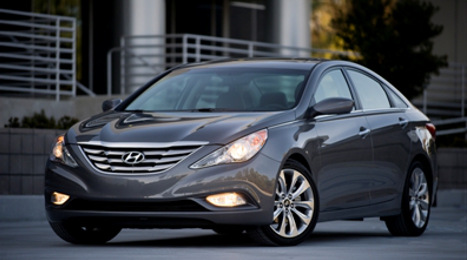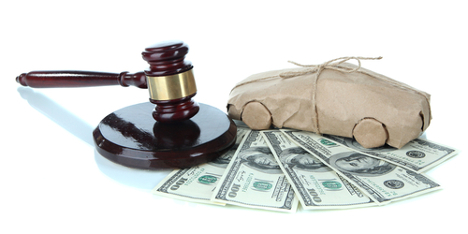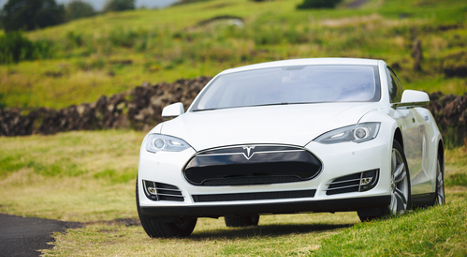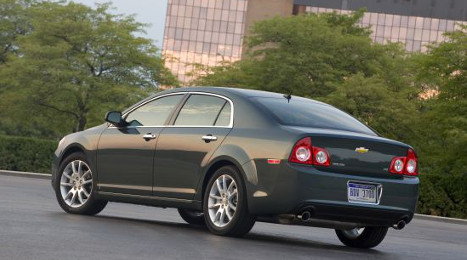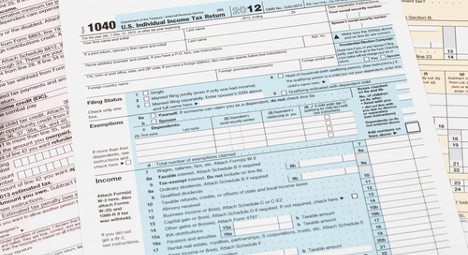The strength in wholesale pricing is still evident, but a “tired tax season” may be emerging along with buyers who feel that prices are due to come down.
That’s what the Black Book editorial team observed last week in the auction lanes and reported in the latest Black Book Market Insights report. Overall movement in volume-weighted car values was staticweek-over-week, with truck prices up 0.31 percent.
“The wholesale market remains strong, especially for trucks; however, buyers are starting to show resistance as more no-sales are being reported all across the country,” said Anil Goyal, Black Book’s vice president of automotive valuation and analytics.
Many dealers, it seems, have “enough inventory” and are simply bargain-shopping now, Black Book’s team said in its analysis. In fact, some dealers said they believe there’s a price drop ahead, so they’re hedging their bets.
“Comments from the lanes and data show that used-vehicle inventories have been replenished, and remarketers are seeing signs of a buyer slowdown across many car segments in particular,” Black Book’s analysis said.
To illustrate the sentiment in the lanes, Black Book provided a few comments from its personnel in various pockets of the country:
- Florida: “Lots of no-sales on 2014 and 2015 models.”
- Phoenix: “Rental car market has been slow this week, not selling as well.”
- Milwaukee: “Dealers still finding it difficult to buy what they need.”
- Pennsylvania: “Buying was moderate today. Sale was not as good as last week.”
- Tampa: “Buyers said they were being cautious, waiting on market to fall.”
Segment-wise, some of the stronger performers were:
- Small cars, which Black Book says have apparently been better sellers in recent weeks, although a slow price decline the rest of 2015 due to their “good supply.”
- SUV and pickup segments, which have shown widespread strength. Compact SUVs, for instance, were up 1.17 percent ($248) and midsize SUVs were up 0.65 percent ($134).
Though tax season is on the way out with Wednesday marking the final day to file taxes, the Black Book editorial team continued to see strength in the lanes last week, especially for some of the smaller car segments.
For example, compact cars saw prices rise by $47 (or 0.52 percent), while entry-level cars saw prices spike by $33 (or 0.45 percent). Entry-midsize cars also saw a bump in price with a $15 (or 0.15-percent) increase.
This market strength among smaller cars played a role in keeping overall car segment prices “stable” in the lanes and relatively unchanged from last week, according to the latest Black Book Market Insights report.
The biggest outlier among the cars this past week was the prestige luxury cars, which saw the largest decline of $204 (0.64 percent) last week. All cars, except for the luxury and premium segments, went up in value last week, according to Black Book data.
Truck values were also basically unchanged this past week, but saw a slight average increase of $10 (0.11 percent).
And a comment overheard by Black Book editorial staff from an auction in Florida, stated, “A few good trucks at the auction raised the dollars,” while a buyer from Washington said, “The market continues to be strong with a good selections of trucks.”
The market strength among trucks was led by full-size pickups, which saw prices rise by $46 (0.26 percent) and minivans, which spiked by $23 (0.19 percent).
On the other hand, luxury SUVs saw the biggest drop in value, with prices falling by $56 (0.19 percent).
“Market strength has now extended into the second week of April for small car segments. In addition, full-size truck values remained fairly strong,” said Anil Goyal, vice president of automotive valuation and analytics.
Black Book analysts expect the market to start to soften in the coming months supply starts to outweigh demand.
Though wholesale prices were on the way up in March, the movement was tempered by expanding used supply.
According to analysis shared by Tom Kontos, executive vice president of ADESA Analytical Services, downward pressure from used supply expansion is manifesting through lower conversion rates and price weakness in particular age, sale type, and model class segments.
According to ADESA Analytical Services data in the latest Kontos Kommentary report, wholesale prices were up 4.7 percent compared to February and up 2 percent year-over-year to end the month with an average price of $10,646.
Fleet/lease consignors enjoyed the biggest bump up from February, with prices rising by 7.4 percent. Manufacturers also felt the impact of tax season highs with prices rising by 4.5 percent. And dealer consignors saw an impressive lift of 6 percent from February.
According to the latest Guidelines report from NADA Used Car Guide, used price strength in March was due in past to the used-vehicle market making up “lost ground” after harsh winter weather put a damper on market activity during the first two months of the year.
According to NADA, prices of used vehicles up to 8 years in age grew by 2.3 percent on a monthly basis in March.
And this marked the highest increase recorded since March of last year when prices rose by over 4 percent during tax season, NADA UCG reported.
Although it looks like prices are holding strong, ADESA’s Kontos explained a “deeper analysis” shows the downward pressure supply growth is putting on rates in the lanes.
“A problem with relying on sales prices for assessing market conditions, even based on the robust data set available through the millions of auction transactions we analyze in this space, is that this data set omits the vehicles that no-sold,” said Kontos. “A large portion of off-rental program vehicles that would have been sold in late-2014 and whose sale was curtailed until early 2015 were no-sale’d in March in hopes of better prices in forthcoming sales.
“Ignoring this factor leads to a false sense of confidence in the strength of wholesale values.”
Kontos also pointed out average sales prices are being effected by a “richer mix” of institutional vehicles. He pointed out the aforementioned off-rental program vehicles “have had particular impact in elevating average prices.”
NADA analysts said historically, used prices have now risen by an average of nearly 1.5 percent in March over the past 20 years.
That said, pre-recession prices grew by an average of 0.7 percent in March, but by a more significant 2.7 percent in the years since.
“The post-recession increase is not only a function of circumstance (weather disruptions for example), but is also likely due in part to better and more precise dealer inventory management practices,” NADA Used Car Guide's Jonathan Banks said in the report.
Meanwhile, according to ADESA data, the strongest segments this past March were the trucks, including vans, SUVs and pickups, which “performed much stronger than the car and crossover classes,” Kontos said.
Overall, the truck segments saw prices rise by 6 percent last month, while cars saw a 3.6 percent rise and crossovers rose by 4.7 percent.
Some of the most impressive price increases were seen among the SUV segments. For example, the mini-SUV segment saw a 10-percent price spike from February, while the midsize SUVs saw prices rise by 8.1 percent. Full-size pickups continued to perform strongly with a price increase of 4.1 percent.
The truck segment with the weakest retention last month was the compact pickups, but they still saw a 2.6-percent increase from February rates.
For cars, the largest price increased were seen in the luxury car and sporty car segments, which both saw prices rise by 6.4 percent, according to ADESA data. On the other hand, the midsize car segment lagged a bit with a slight 0.9 percent increase when compared to February.
Auction volume was also up in March, perhaps not surprisingly as supply is expected to expand dramatically this year.
According to the Guidelines report, auction volume for models up to 8 years old was roughly 341,000 units in March, up 3 percent from February's level and more than 5 percent higher than March 2014.
Growth was most substantial for 2014 model-year vehicles, “which continues to dominate supply through the lanes,” NADA reported.
Volume for 2014 model-year vehicles reached 70,000 units last month, which is 7 percent higher than in February and up 33 percent from what was recorded for the 2013 model year last March.
As for what’s in store for this month, NADA predicts March’s tax-season peak strength will play a part in limiting depreciation in April to 1 percent, which is strongerthan the 1.5 percent decline averaged for the month over the past 10 years.
“Similar to March, depreciation within mainstream and luxury groupings is expected to be tightly clustered, with losses continuing to be more substantial for premium segments,” Banks said.
Following seasonal patterns, prices are expected to drop approximately 3 percent in May and June, before becoming more moderate in July.
The special vehicle markets are heating up as summer approaches, with collectible car values increasing across the board.
The most recent Black Book Market Insights report touched on the specialty markets, showing a hot spring for collectible vehicles.
Collectible car values are rising rapidly, with exotic cars seeing the highest price increases. Over the course of January to March, exotic car prices rose by 3.61 percent, while sports cars saw rates rise by 3.7 percent over the same period. Classic trucks bumped up by 0.72 percent; pony cars saw prices increase by 0.65 percent; and lastly, muscle cars jumped up by 0.9 percent.
“Collectible cars continue to increase in value across the board. Vintage exotics once again lead the way, as evidenced in the sales results from the auctions held in conjunction with the Amelia Island Concours d’Elegance,” said Eric Lawrence, director of specialty markets for Black Book.
The Ameila Island event broke $100 million in sales. RM Southeby’s was a top seller, reporting $60.4 million, while Gooding and Company came in at $26.9 million and Bonhams reached $14 million.
Some of the biggest sales of the event included a 1960 Ferrari 400 Superamerica SWB Cabriolet that sold for $6.38 million, as well as a 1955 Jaguar D-Type for $3.675 million, both sold by RM Southeby’s, who also sold a 1971 Lamborghini Miura SV for $2.31 million.
Also notable was Gooding’s sale of a 1972 Ferrari 275 GTB/4 Coupe for $3.3 million and a 1957 Mercedes-Benz 300 SL Convertible for $1 million, sold by Bonhams.
Tax season buying and selling activity is still in “high gear” with April 15 quickly approaching.
That’s according to the latest Black Book Market Insights report, which showed strong price retention in the lanes last week for both cars and trucks.
On average, the car segments saw a $6 (or 0.5-percent) increase in prices, while trucks saw a spike of $25 (or 0.15 percent).
And the stability spanned segments, with most vehicles groups seeing prices rise last week.
“Markets continue to show broad strength across segments with both car and truck values appreciating last week in the strongest week this season,” said Anil Goyal, vice president of automotive valuation and analytics.
Black Book reported entry-level cars, entry-midsize cars and upper midsize cars showed particularly strong retention last week, with prices rising by $52, $38, and $52, respectively.
And the entry-level segment spike of 0.73 percent was the biggest price increase out of all segments last week.
And compact SUVs and full-size pickups outperformed their truck counterpoints last week, as well. Compact SUVs saw a significant price increase of $135 last week, while the full-size pickups saw prices rise by $101.
Market strength was further illustrated by comments from the lanes Black Book analysts recorded last week.
For instance, this comment from the auction lanes in Florida: “Buyers and sellers were both feeling good with great attitudes about the market.”
Or, this one from from Greensboro, N.C.: “The crowd was larger this week than last week with units still selling very well.”
All of that profit dealers are generating with record-setting certified pre-owned metal and other used vehicles are keeping wholesale prices at slightly higher levels than a year ago.
Although wholesale prices fell in the final two months of this year’s first quarter, Manheim determined that the average level for Q1 came in 1.6 percent higher than the fourth quarter of last year and 1.3 percent above the same quarter last year.
To arrive at those readings, Manheim found that wholesale used-vehicle prices (on a mix-, mileage-, and seasonally adjusted basis) softened by 0.5 percent in March. Chief economist Tom Webb pointed out that “naturally” prices rose before the seasonal adjustment.
All told, March’s decline pushed the Manheim Used Vehicle Value Index to a reading of 124.5, which was virtually identical to its year-ago reading of 124.4.
“Wholesale pricing has remained slightly above trend level due to continued strong profit opportunities on the subsequent retail sale,” Webb said.
“The used vehicle market is off to a good start in 2015, with wholesale prices remaining above trend level thanks in part to continued strong profit opportunities in the retail market,” Webb continued. “With pricing slightly stronger than expected, consumers continue to see the value in purchasing used vehicles, which remain a profitable part of a dealer’s business.”
Three of the six vehicle segments Manheim tracks each month posted price movements of at least 5 percent in March. While prices for pickups (up 5.4 percent) and vans (up 5.0 percent) climbed, prices for compact cars dropped (down 5.2 percent).
While Manheim noticed prices for SUVs and CUVs settled virtually flat versus a year ago (up 0.2 percent), analysts pointed out prices for luxury cars crept up by 1.3 percent while prices for midsize cars dipped by 1.9 percent.
“In recent months, as well as over the past year, wholesale pricing for compact cars has been weak. Pickups and vans continued to be the significant outperformers,” Webb said.
Within the pricing tiers, Webb indicated there continued to be “weakness” in the range spanning $9,000 to $11,000 while the “strength” covers vehicles costing above $15,000.
“Pricing for dealer-consigned units improved in March after showing some temporary weakness in February,” Webb said.
“On the used inventory side, it will be important to see if dealers placed the right money on the slightly higher-than-expected number of trade-ins they received in March,” he continued. “Auction activity in the coming weeks will tell that story.”
Analysis of Rental Risk Units
Manheim mentioned pricing for rental risk units in March eased from a year ago.
Webb noted that auction prices for rental risk units sold in March jumped up from February, but the seasonal movement was less than last year’s spike. As a result, prices — “although still strong,” according to Webb — softened by 4.2 percent from a year ago, adjusting for mileage and broad changes in mix.
On a sales-weighted basis, Webb said rental risk prices in the first quarter dropped 2 percent year-over-year.
“Auction volumes for rental risk units were up significantly both in March and for the quarter as a whole,” Webb said. “Conversion rates were better than average. Although average mileage on rental risk units in March dipped from February’s record high, it remained above 45,000 miles, and up 8 percent from a year ago.”
Used-Vehicle Retail Market Highlights
Webb indicated retail used sales by franchised and independent dealers appear to have been level with a year ago both in March and for the quarter.
“Dealers retailing units in the $18,000 and above range did better than those selling lower-end units,” he said.
As previously reported by Auto Remarketing, Manheim also recapped CarMax posted a strong 7-percent increase in same-store retail used unit volumes and an average transaction price of $19,297 for its fiscal quarter that ended Feb. 28.
Webb went on to highlight manufacturer certified pre-owned sales also continued their record pace, up 8 percent in March and 11 percent year-to-date. Auto Remarketing has more CPO sales details as well as breakdowns of how domestic OEMs fared as well as how foreign automakers performed.
Webb also touched on his assessment as to why other parts of the used-retail market didn’t achieve the success like the CPO segment did.
“Dealers selling lower-priced units were likely hampered by a less-than-stellar tax refund season,” Webb said. “Since the start of February, the level of tax refunds has fallen below the year-ago amount in seven out of eight weeks. Through March, total refunds were down 1.1 percent, or $2.3 billion, from a year ago.
New-Vehicle Sales Commentary
Unfolding like Manheim expected, Webb noted the seasonally adjusted annual selling rate for new models bounced back in March to surpass 17 million from a “weather-dampened” 16.2 million pace in February.
“March’s strength was concentrated in foreign nameplates due to higher incentives — possibly allowed by exchange rate movements — and the closeout of the fiscal year for Japanese companies,” Webb said.
“Industrywide, however, it is still true that the new-vehicle sales environment is supportive to used-vehicle residuals,” he continued.
Average transaction prices continue to rise across the board as they are 3.5 higher over the past year to $33,280, according to Kelley Blue Book. However, KBB data showed incentive spending was flat in March, ticking down for domestic brands while rising slightly for foreign nameplates.
“Reasonable new-vehicle inventory levels going into April should also help used-vehicle values,” Webb said.
Editor’s note: More analysis and commentary Webb shared during his quarterly conference call is on tap to be included this week in both Auto Remarketing Today and SubPrime News Update.
For the most part, used electric-vehicle prices continue to be very soft, a trend that has remained pretty steady over the past couple of years and has been compounded as of late due to low gas prices.
And with many of the newer model-year EVs, such as the 2014 Chevy Volt, set to hit the used market in droves this year, this may provide some cheap options for consumers with fuel-efficiency top-of-mind.
One problem — the consumer demand might not be there. Larry Dixon, senior manager of market intelligence at NADA Used Car Guide, said, “Used EV demand continues to be hampered by range and technology concerns, as well as by stiff competition from highly efficient — and more affordable — gasoline-powered cars.”
And the fact that gasoline prices are about $1 less than they were this time last year certainly plays a role in shifting consumer attention away from these fuel-efficient — but pricey — models.
“Substantially lower gasoline prices make it even more difficult to justify an EV purchase from an economic standpoint. Again, lower gas prices combined with ongoing gains in gas-powered vehicle efficiency makes EVs an even harder sell,” Dixon explained.
Looking at specific price movement to illustrate overall softness in the market, take these statistics into account:
According to NADA data, trade-in values for 2011 to 2013 model-year EVs, such as the Nissan Leaf, Chevy Volt and Ford C-Max, fell by 25 to 35 percent from the first quarter of 2014 to the Q1 of this year.
By comparison, trade-in values for gas powered compact and midsize cars fell by an average of 15 percent over the same period, Dixon pointed out.
Bucking the Price Trends
With this poor performance in mind, the players bucking the trends stand out quite a bit, or as Dixon puts it: “The strong EV performers stand out more than weaker ones since the majority is underperforming at the moment.”
One example is the Tesla Model S, whose values have held up very well so far. According to NADA data, used value retention for the 2012 Model S with the 86 kilowatt-hour battery stands at about 57 percent retention, which Dixon pointed out is on par with the 2012 Porsche Panamera’s retention of 62 percent.
In comparison, retention for the 2012 versions of the Chevy Volt and Nissan Leaf is around 35 percent and 27 percent, respectively, according to NADA data.
“As long as there is an air of exclusivity, values for vehicles like the Model S and Panamera e-hybrid will likely outperform those of the competition,” Dixon said.
The Strongest Players|
Moving beyond price and taking a look at consumer demand in the luxury EV market, in this instance, Tesla and BMW stand out.
“Tesla’s new-vehicle sales and used-value retention have been solid to-date, and while it’s still early, sales of BMW’s i3 compact EV are off to a strong start,” said Dixon. “Per Wards Auto, BMW delivered nearly 2,700 new i3s in the first quarter of 2015, which was 12 percent of all EV sales.”
Dixon traces Tesla and BMW’s strength in the EV market to their luxury status.
“For example, Tesla’s Model S is an expensive luxury vehicle purchased by affluent consumers and demand for the model has been predicated on owning a vehicle an aura of exclusivity,” said Dixon. “Luxury vehicles often do not compete with the larger pool of mainstream, gasoline powered substitutes, but rather a rarer group of more technologically advanced performance models."
As for what pushes demand on the more inexpensive models, such as the Volt and Leaf, Dixon said consumer interest focuses on more practical factors, such as upfront costs, maintenance/repair costs, price among the competition, overall range, real-world practicality and gasoline prices.
“Simply put, competition for mainstream models has been much fiercer than for luxury models, hence their lower retention rates,” Dixon concluded.
The Tesla Anomaly
The Tesla Model S, in particular, is low on competition. And compounding this is the fact that the number of these units running through the lanes has been small — which also supports stronger used prices, Dixon said.
“We’ve recorded approximately 100 Model S sales (all model years) through our AuctionNet auction network to-date. Judging by the Model S’ solid retention, consumer reception has been strong,” said Dixon.
And right now, there are few used luxury competitors to the Model S. The 2014 Cadillac ELR, for example, isn’t holding retention like the Model S, retaining only 58 percent of its value.
“By comparison, retention for the 2014 Model S with the 85 kilowatt-hour battery stands at roughly 83.7 percent,” said Dixon. “Retention for the 2014 Porsche Panamera S e-Hybrid 3.0L V6 is 79 percent, not too dissimilar from the Model S.”
Spring trends in the lanes haven’t played out quite like they normally do, according to Black Book, and depreciation patterns in March continued to show differences when compared to 2014 as demand for larger vehicles dominated tax season.
According to Black Book, wholesale prices for model years 2009-2013 fell by an average of 0.7 percent in March, a slightly smaller drop than movement seen in February.
Domestic cars saw prices rise by 0.9 percent; import cars and import trucks both dropped by 0.9 percent; and domestic trucks dropped by 0.3 percent.
“Both car and truck values held up high throughout November and December of 2014. This early buying took the steam out of the usual spring time seasonality increase and resulted in more stable prices over the last few months,” said Anil Goyal, vice president of automotive valuation and analytics. “The data also show that slightly larger cars were in more demand this tax season, perhaps as a result of low gas prices and improved overall strength in the broader economy.”
For example, the upper-midsize cars and full-size cars saw price increases last month of 0.6 percent and 0.9 percent, respectively.
And three truck segments also saw prices rise: full-size cargo vans (0.9 percent), compact CUVs (1.1 percent, and full-size passenger vans (1.5 percent).
Interestingly, the entry-level cars, normally hot items for tax season, only saw a 0.1 percent increase.
Luxury SUVs saw one of the biggest price drop this past month, with prices dropping by 1.5 percent. Vehicles in this segment, such as the Lincoln Navigator, ended the month with an average price of $34,597, which is 13 percent lower than rates since in March 2014.
Cargo minivans also finished the month with depreciation of 1.5 percent.
But one van segment, in particular, bucked industry trends. The full-size passenger vans saw the biggest price increase in March, with prices rising by 1.5 percent to finish the month with an average price of $19,468 — up 3.3 percent year-over-year.
The car segment with the largest depreciation for March was the premium sporty cars with a decline of 1.2 percent to finish the year off with an average of $46,147.
This week’s Used Car Market Insights report from Black Book once again focused on how spring in the used-car business is panning out a bit differently from years past.
Throughout tax season this year, Black Book has noticed stronger-than-average retention in the entry midsize car and the upper midsize car segments as well as the compact SUV segment.
This past week, the entry midsize cars saw prices rise by 0.22 percent (or $18), while the upper midsize cars rose by 0.34 percent ($34). The compact SUVs saw the largest dollar spike in price for the truck segments, with rates rising by 0.75 percent ($132).
Interestingly, as these segments are on the upswing, analysts haven’t see the usual tax-season strength in segments such as the entry-level cars and compact cars.
The entry-level cars saw prices slide by $7 last week, while the compact cars saw a slight $6 price increase.
Overall, the car segments saw an average drop of 0.06 percent or $6 last week, while the trucks dropped by 0.05 percent or $7.
The report also pointed out truck price movement is bucking trends, as well. According to Black Book, the truck segments didn’t see prices fall dramatically at the end of 2014 and “held up high” in November and December.
“This early buying took the steam out of the usual seasonality resulting in more stable prices over several months,” the report stated.
Anil Goyal, vice president of automotive valuation and analytics, said, “Seasonality patterns are looking different this spring as the interest from buyers kept the used-vehicle market more level from the latter part of 2014 into the first quarter of early 2015.”
And not only did tax season not impact the usual segments as much, but Black Book also reported patterns of strong price retention in March didn’t show up this year.
Black Book analysts contend we may be nearing the latter part of tax season, based on many dealers in the lanes reporting and overall market slowdown.
According to a dealer from Washington state cited by Black Book, “Even though vehicle volume and buyer attendance were both normal today, the market was a little slower this week (last week) compared to last.”
This may be due, in part, to dealer starting to collect tax season inventory as far back as late November, which was an “early start” for the industry, according to the report.
In less than two years, the auto industry might look a lot like the business we knew before the Great Recession.
That’s according to executive analyst for NADA Used Car Guide Jonathan Banks, who predicts late-model used vehicle supply will reach pre-recession levels in 2017.
Banks reported this assertion on Monday, right in time for the NADA and J.D. Power Automotive Forum on Tuesday, hosted by the New York International Auto Show.
And of course, with the growth in supply, the industry also expects this trend will put downward pressure on used-vehicle prices in the coming years.
"The used car market has enjoyed high demand and short supply after the recession causing used car prices to reach all-time highs,” said Banks. “As the automotive market continues its rapid recovery, fundamentals in the automotive market will inevitably drive used car prices down. The question everybody's asking relates to how much prices will drop and when."
There are a variety of factors at work this year, putting opposite pressure on used prices.
NADA’s predictions take into account strong economic growth, new products, healthy employment gains, higher home prices and lower gasoline prices as factors that could potentially have a positive impact on used prices.
But on the other hand, these factors will be battling the negative impact on used prices of higher supply, increased new-market pressure, such as incentives, and tighter credit conditions.
"A burgeoning off-lease supply of used vehicles will drive late-model (5 years old or newer) volume up 8 percent this year. While late-model supply will reach pre-recession levels in 2017, overall supply won't reach this point until a few years later,” said Banks. “Off-lease supply will be dominated by compact cars and utilities, along with mid-size cars and utilities, which is a pre-recession trend reversal.”


